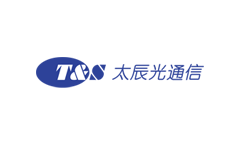What Are the Advantages of OM5 Fiber Patch Cables Compared to OM3 and OM4?

"OM" in optical communication refers to "Optical Multi-mode", optical mode, which is a standard for multimode fibers to express fiber grades. At present, the fiber patch cord standards defined by TIA and IEC are OM1, OM2, OM3, OM4 and OM5.
1. What are multimode and singlemode?
Single-mode fiber is an optical fiber that allows only one mode of transmission, with a core diameter of about 8 to 9 μm and an outer diameter of about 125 μm.
Multimode Optical Fiber allows light of different modes to be transmitted on one optical fiber, with core diameters of 50 μm and 62.5 μm.
Compared with multi-mode fiber, single-mode fiber can support longer transmission distance. From 100Mbps Ethernet to 1G Gigabit network, single-mode fiber can support more than 5000m transmission distance. Multimode fiber is only suitable for short-to-medium distance and small-capacity optical fiber communication systems.
2. What is the difference between OM1, OM2, OM3, OM4, OM5 fiber patch cords?
Generally speaking, OM1 is conventional 62.5/125μm; OM2 is conventional 50/125μm; OM3 is 50μm core diameter multimode fiber optimized by 850nm laser, in 10Gb/s Ethernet using 850nm VCSEL, the fiber transmission distance can reach 300m; OM4 is an upgraded version of OM3. OM4 multimode fiber optimizes the differential mode delay (DMD) generated by OM3 multimode fiber during high-speed transmission, so the transmission distance is greatly improved, and the fiber transmission distance can reach 550m; OM5 fiber jumper The cable is a new standard for fiber patch cords defined by TIA and IEC, with a fiber diameter of 50/125 μm. Compared with OM3 and OM4 fiber patch cables, OM5 Fiber Patch Cables can be used for higher bandwidth applications. The bandwidth and maximum distance for different levels of transmission are different.
3. What is OM5 fiber patch cord?
Known as Broadband Multimode Fiber Patchcord (WBMMF), OM5 fiber is a laser-optimized multimode fiber (MMF) with bandwidth characteristics specified for wavelength division multiplexing (WDM).
The purpose of this new fiber classification method is to provide support for a variety of "short" wavelengths between 850nm and 950nm, wavelengths in this range suitable for high bandwidth applications after aggregation. The OM3 and OM4 are designed mainly to support a single wavelength of 850nm.
4. What is the difference between OM3 and OM4 fiber jumpers?
①The color of the sheath is different
In order to distinguish different fiber optic patch cords, different colored outer jackets are used. For non-military purposes, single-mode fibers generally use a yellow outer jacket. In multimode fiber, OM1 and OM2 are orange, OM3 and OM4 are aqua, and OM5 is lime green.
②The scope of application is different
OM1 and OM2 have been widely deployed in building applications for many years, supporting Ethernet transmission up to 1GB; OM3 and OM4 fiber optic cables are usually used in data center cabling environments, supporting 10G and even 40/100G high-speed Ethernet road transmission. OM5 is designed for 40Gb/s and 100Gb/s transmission, reducing the number of fibers for high-speed transmission.
5. Characteristics of OM5 multimode fiber
① Fewer fibers support higher bandwidth applications
The working wavelength of OM5 fiber patch cord is 850/1300nm, and can support at least 4 wavelengths. Typical operating wavelengths for OM3 and OM4 are 850nm and 1300nm. That is to say, the traditional OM1, OM2, OM3, and OM4 multimode fibers have only one channel, while the OM5 has four channels, which increases the transmission capacity by four times. Combining shortwave wavelength division multiplexing (SWDM) and parallel transmission technology, OM5 can support 200/400G Ethernet applications with only 8-core broadband multimode fiber (WBMMF), which greatly reduces the number of fiber cores. To a certain extent, the wiring cost of the network is reduced.
②Further transmission distance
The transmission distance of OM5 fiber is longer than that of OM3 and OM4. OM4 fiber is designed to support lengths of at least 100 meters with 100G-SWDM4 transceivers. But OM5 fiber can support up to 150 meters in length with the same transceiver.
③Lower fiber loss
The attenuation of the OM5 broadband multimode optical cable has been reduced from 3.5 dB/km of the previous OM3 and OM4 optical cables to 3.0 dB/km, and the bandwidth requirement on the 953nm wavelength has been increased.
OM5 has the same fiber size as OM3, OM4, which means that it is fully compatible with OM3, OM4, if you want to use OM5 in existing cabling, no need to change. OM5 fiber is more scalable and flexible, and can support higher-speed network transmission with fewer multi-mode fiber cores, and the cost and power consumption are far lower than single-mode fiber.
- +1 Like
- Add to Favorites
Recommend
- The Difference Between Fiber Patch Cord and Fiber Pigtail
- Five Tests to Ensure the Fiber Patch Cord Quality
- Selection and Detection of Fiber Optic Patch Cord
- FO Outdoor Cables And Pre-assembled Installation Cables (VIK) With Outdoor Cables
- Classification and Instruction for Use of Fiber Optic Patch Cord
- What is Armored Fiber Optic Patch Cord and What Are the Characteristics?
- Fiber Optic Patch & Splice Enclosures
- What Are the Components of Internet of Things?
This document is provided by Sekorm Platform for VIP exclusive service. The copyright is owned by Sekorm. Without authorization, any medias, websites or individual are not allowed to reprint. When authorizing the reprint, the link of www.sekorm.com must be indicated.






























































































































































































































































































































































































































































































































































































































































































































































































































































































